
What is the difference between the Nexus 7010 and 7018? Here we will share some key similarities and the differences between the two big network switches.
The first difference is size and weight. The Nexus 7010 is 36.5″ (92.7 cm) tall and can weigh up to 516 lb (235 kg) whereas the Nexus 7018 is 43.5″ tall (110.5 cm) and can weigh up to 696 lb (316 kg) fully loaded. That equates to the Nexus 7010 being about 21RU and the 7018 25RU. Both are also the full depth of a standard 4-post rack–so you need to be aware of quite a bit when designing the space layout around them. Below is an image from Cisco’s web site ( https://www.cisco.com/en/US/products/ps9402/index.html ) that shows the 7018 on the left and the 7010 on the right.
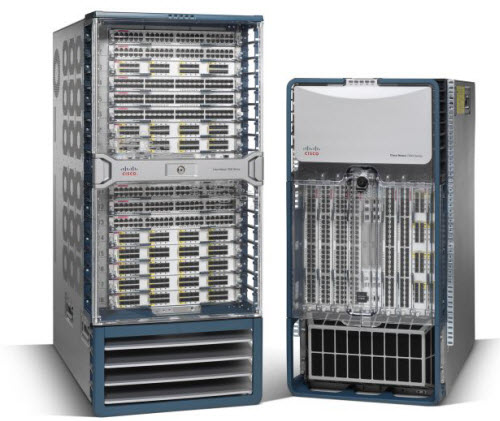
Cisco Nexus 7000 Hardware Architecture
Nexus 7010 Chassis
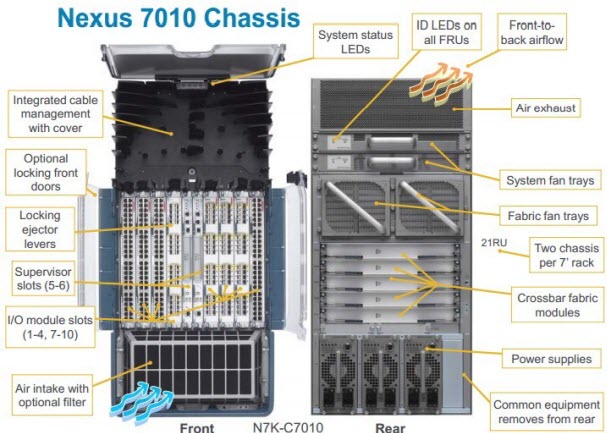
Nexus 7018 Chassis
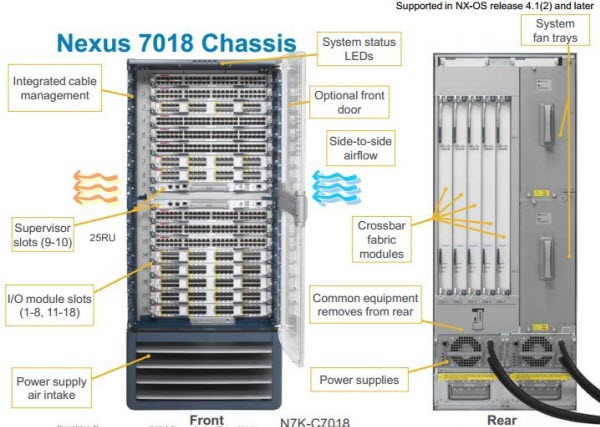
The next difference in them is the slot capacity and performance. The Nexus 7010 is a 10-slot chassis but slots 5 and 6 are reserved for Supervisors, so the real capacity is 8 line cards. In the 7018 you have an 18 slot chassis and slots 9 and 10 are reserved for supervisors, thus providing 16 available slots for line cards. With the currently available supervisors and cards, the Nexus 7010 can handle 480 Mpps and the 7018 can support twice that, 960 Mpps. In both the Nexus 7010 and 7018 chassis you can have up to 5 fabric modules installed, but there is a difference between the 7010 and the 7018 the cards. In the 7010, the cards are in a vertical mounting whereas in the 7018 they are in a horizontal mount. This is one of the only cards that is unique to each chassis. All the other line cards (supervisors, 1g, 10g, etc.) are interchangeable between the two.
When you look at the Nexus 7010 and the line cards, in order for the fabric card to “touch” all the line cards, it would have to be mounted horizontally. In the 7018, the line cards are horizontal – so the fabric card needs to be vertical. It is just how the backplane connections work in these chassis’.
The Nexus 7018 (N7k-C7018-FAB-1) is pictured on the left and the 7010 Fabric module (N7K-C7010-FAB-1) is on the right.
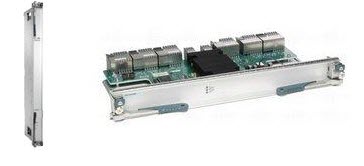
Like the fabric cards that are found on the back, the fan trays that are found on the back are unique to each switch. The Nexus 7018 fan tray (N7K-C7018-FAN) is larger and contains more fans as the airflow on that chassis is side-to-side, but the 7010 fan tray (N7K-C7010-FAN) is a smaller as the chassis airflow is front to back. The 7018 fan tray is picture below on the left and the 7010 fan tray is on the right. When it comes to the Nexus 7018 airflow, Panduit actually makes a special rack just for this switch to accommodate the airflow in a cold aisle/hot aisle data center.

The final difference is with the power supplies. Today there are three power supplies for the Nexus 7000 switches, two that are AC powered and one that is DC powered. There is a 6000 kW AC (N7K-AC-6.0KW), a 7500 kW AC (N7k-AC-7.5KW), and finally a 6000 kW DC (N7K-DC-6.0KW) power supply. In the Nexus 7010 you can have up to three power supplies installed and in the 7018 you can have up to four installed. With the 6000 kW power supply, the cable connected is a standard C19 to country specific plug type. On the 7500 kW one, the cable is hard-wired to the power supply and must be ordered with the correct plug type. When it comes to the DC power supply, there is also a DC Power Interface Unit that you will need in order to provide the DC power to the power supply.
Pictures of the power supplies are below with the 6000 kW on the left, the 7.5KW on the right and the DC one below.
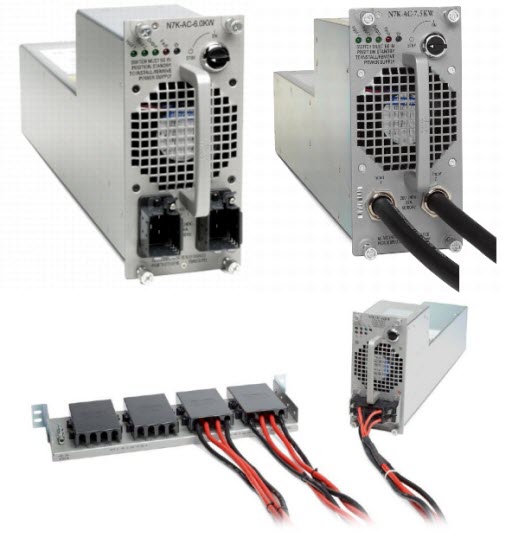
As for the similarities, most everything else is the same–Supervisors, Line Cards, configurations, NX-OS, etc.
More Related Cisco Nexus 7000 Topics:
DHCP Relay on the Nexus7000/NXOS vs. IP Helper on the 6500/IoS


